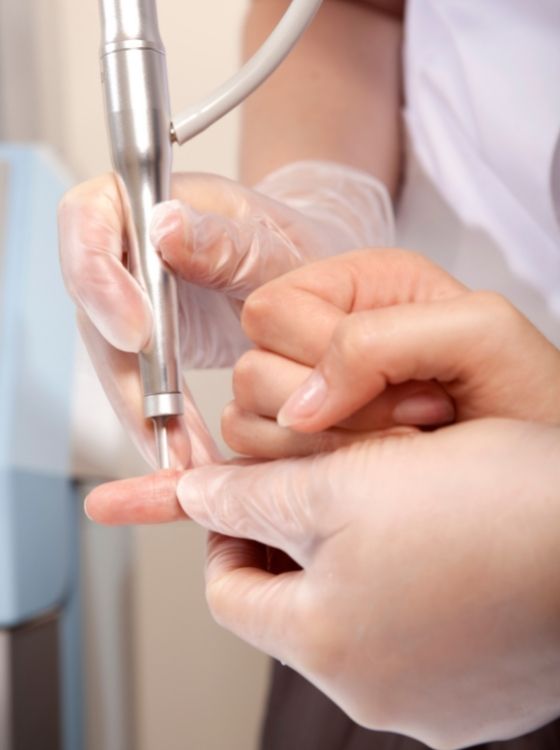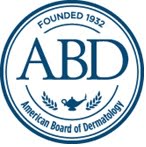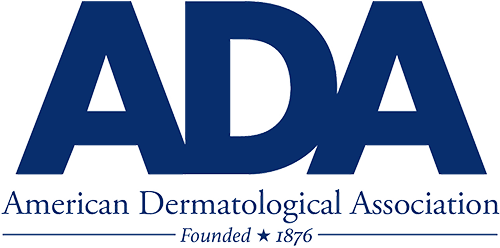Common Skin Growths
Common Skin Growths
Human skin is prone to develop many kinds of growths. Some of these skin growths, known as lesions, are barely noticeable and do not require medical attention. However, some can appear unsightly or cause symptoms such as bleeding, itching, and pain and may need to be treated. It is important to be watchful for any new skin growths as they could be pre-cancerous or indicate skin cancer. This article provides information about some of the most common skin growths and their treatments.
Angiomas
An angioma is a benign growth that is made up of small blood vessels. Angiomas can occur anywhere on the body but are common on the trunk and extremities. Their cause is not known.
There are different types of angiomas, the most common being spider angiomas and cherry angiomas. Spider angiomas, which are common during childhood and pregnancy, can sometimes be a warning of liver damage when present in large numbers. Cherry angiomas appear like small red papules that tend to occur in adults and increase in number with age.
Most angiomas do not cause symptoms, but they can bleed with trauma. If treatment is necessary for cosmetic purposes, laser therapy is usually the most successful method. At DCA we often use the Vbeam laser to treat angiomas. Other treatment options include electrodesiccation and freezing with liquid nitrogen. Occasionally, angiomas can recur after treatment.
Moles
Nevi, commonly called moles, are a common type of skin growth. They appear as small, dark brown or black spots, usually less than a quarter of an inch in size. Moles usually appear during childhood and adolescence. People who have moles will have 10 to 40 of them. Moles can fade or change in appearance over time. Hormonal changes, such as during adolescence or pregnancy, can cause them to become larger and darker.
While most moles are harmless, they can occasionally become cancerous. Careful monitoring of moles for changes in size, shape, color, and texture is an important part of skin cancer detection. An asymmetrical shape, irregular border, changing or uneven coloration, enlarging size, or evolving size, shape, or color are indicative of melanoma or other skin cancers.
Cysts
A cyst is a benign, dome-shaped, encapsulated sac that contains pus, fluid, or air. Cysts are very common and can occur anywhere on the body, varying in size from tiny to very large. There are several different types of skin cysts.
Epidermoid cysts or sebaceous cysts look like small bumps under the skin, usually occurring on the face, neck, and trunk. They are slow-growing and often painless, so they rarely require treatment.
Epidermal inclusion cysts occur in response to injury and consist of firm, flesh-colored nodules with a central punctum (opening). Unless they rupture, epidermal inclusion cysts do not require treatment. If ruptured, an epidermal inclusion cyst can cause pain and inflammation, which may warrant treatment with incision and drainage, warm compresses, antibiotics for secondary infection, and/or injection of steroid medication into the lesion.
Keratosis pilaris
This is a harmless skin growth that consists of tiny sandpaper-like bumps in dry, rough patches of skin, resembling goosebumps. Keratosis pilaris often occurs on the cheeks, arms, thighs, and buttocks. The bumps are usually painless and do not itch. The condition can worsen during dry weather and when the skin is dry.
Keratosis pilaris is common in young children and disappears by age 30 in most people. There is no specific treatment or cure besides using moisturizers. A dermatologist may prescribe some creams to improve the appearance of the skin.


Experience
Our expert medical providers have years of training and hands-on experience.

Integrated Care
We offer multiple dermatology providers and departments.

Entire Family
We can address dermatology concerns for the entire family at DCA.

Warts
Warts are dark brown, gray, or black-colored skin growths with a rough texture. They look like small blisters or cauliflowers. Warts are non-cancerous and commonly occur on the hands. They form when the top layer of skin is infected by a virus called HPV (human papillomavirus). Infection with HPV is more likely if there is a cut or the skin is damaged in some way, such as by biting the fingernails. People with a weak immune system are more prone to developing warts.
Warts are contagious. They can spread through contact with the wart itself or with something that touched the wart. Sometimes, warts go away without treatment, especially in children. Adults may require treatment, particularly if the wart is painful. Treatment options for warts include cantharidin, a topical medicine that causes a blister to form on the wart, allowing it to be lifted off the skin after a few days. Other treatments for warts include cryosurgery (freezing), electrosurgery and curettage (burning and scraping off), and excision (surgically cutting out the wart).
Skin Tags
Also known as acrochordons, skin tags are small non-cancerous growths that are the same color as skin and look like a piece of skin tissue on a tiny stem. Skin tags develop due to the skin rubbing against itself. They tend to grow in areas such as the armpits, eyelids, neck, under the breasts, thighs, groin, and genitals.
Skin tags do not affect a person’s health and do not require treatment unless their appearance is bothersome. A trained medical dermatology professional can perform a skin tag removal procedure if one or more skin tags are making you self-conscious.
It is important to see a dermatologist professional for an accurate diagnosis. Sometimes, a growth that looks like a skin tag might be something else, such as a wart or skin cancer.
Neurofibromas
Neurofibromas are non-cancerous skin growths that grow from nerves. They mostly occur in association with a genetic disease but can occasionally develop in otherwise healthy people.
A neurofibroma appears like a lump under the skin. It may not cause any symptoms, or it may be painful and itchy. A painful neurofibroma should be examined by a dermatologist to ensure it has not become cancerous.
Most sporadic neurofibromas that do not have a genetic association and are painless do not require any treatment. However, it is possible to surgically remove a neurofibroma for cosmetic reasons or if it is causing symptoms.
Seborrheic Keratoses
These are some of the most common benign growths of the skin. They appear as scaly, brown, somewhat greasy-looking plaques that appear like they’re stuck on the surface of the skin. Seborrheic keratoses can occur anywhere except the palms, soles, and inner lining of the mouth, nose, etc. They are common in adults and unusual in children. The cause is unknown, but there may be a genetic predisposition with seborrheic keratoses running in some families.
Treatment for seborrheic keratoses is not required unless they are itchy, irritated, or inflamed, or their removal is warranted for cosmetic reasons. Cryotherapy (freezing with liquid nitrogen) or curettage (scraping with a blade) is usually adequate. A biopsy may be recommended if the clinical diagnosis is uncertain.
Our Dermatology
Credentials





